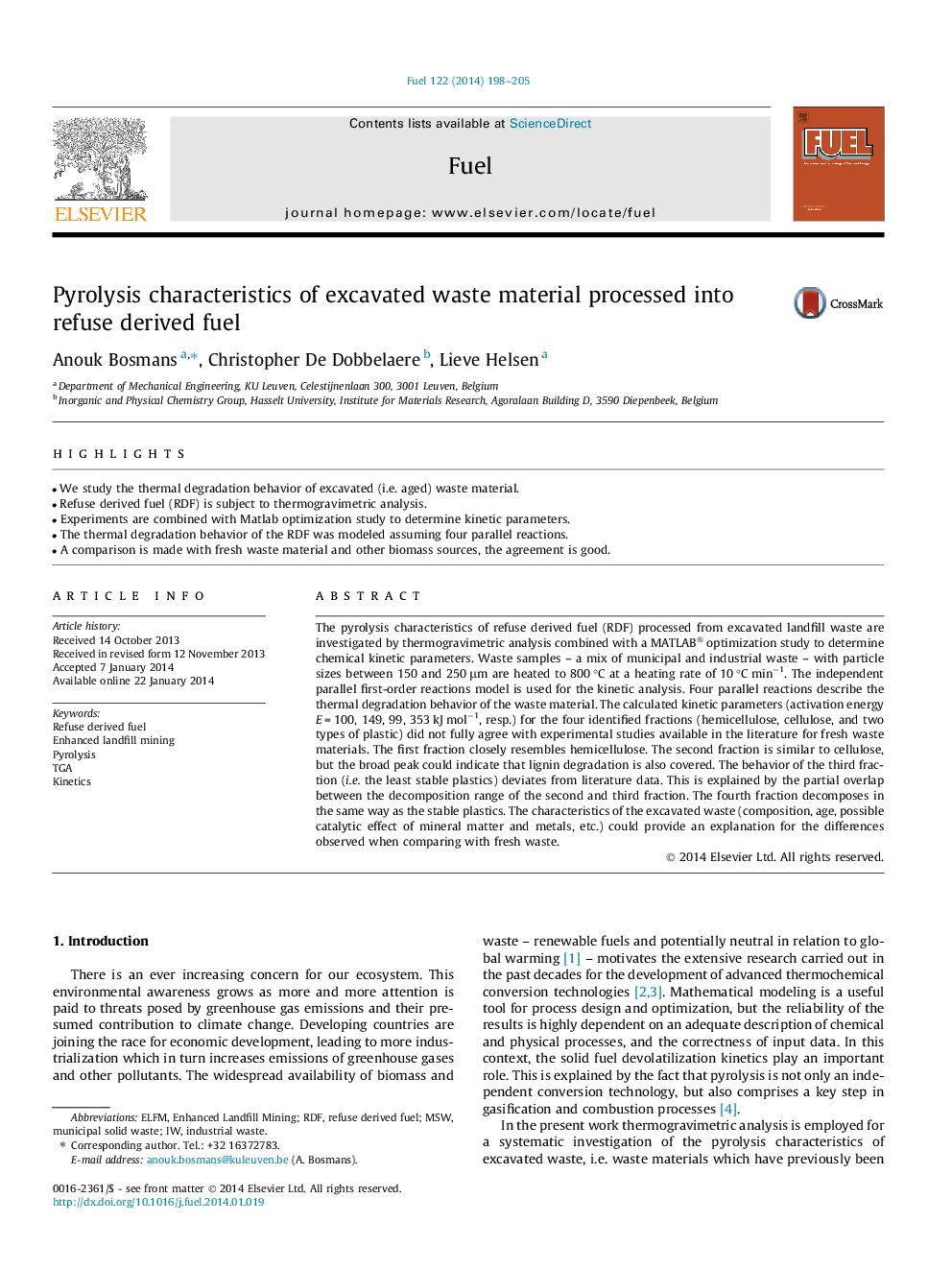| کد مقاله | کد نشریه | سال انتشار | مقاله انگلیسی | نسخه تمام متن |
|---|---|---|---|---|
| 206135 | 461142 | 2014 | 8 صفحه PDF | دانلود رایگان |
• We study the thermal degradation behavior of excavated (i.e. aged) waste material.
• Refuse derived fuel (RDF) is subject to thermogravimetric analysis.
• Experiments are combined with Matlab optimization study to determine kinetic parameters.
• The thermal degradation behavior of the RDF was modeled assuming four parallel reactions.
• A comparison is made with fresh waste material and other biomass sources, the agreement is good.
The pyrolysis characteristics of refuse derived fuel (RDF) processed from excavated landfill waste are investigated by thermogravimetric analysis combined with a MATLAB® optimization study to determine chemical kinetic parameters. Waste samples – a mix of municipal and industrial waste – with particle sizes between 150 and 250 μm are heated to 800 °C at a heating rate of 10 °C min−1. The independent parallel first-order reactions model is used for the kinetic analysis. Four parallel reactions describe the thermal degradation behavior of the waste material. The calculated kinetic parameters (activation energy E = 100, 149, 99, 353 kJ mol−1, resp.) for the four identified fractions (hemicellulose, cellulose, and two types of plastic) did not fully agree with experimental studies available in the literature for fresh waste materials. The first fraction closely resembles hemicellulose. The second fraction is similar to cellulose, but the broad peak could indicate that lignin degradation is also covered. The behavior of the third fraction (i.e. the least stable plastics) deviates from literature data. This is explained by the partial overlap between the decomposition range of the second and third fraction. The fourth fraction decomposes in the same way as the stable plastics. The characteristics of the excavated waste (composition, age, possible catalytic effect of mineral matter and metals, etc.) could provide an explanation for the differences observed when comparing with fresh waste.
Journal: Fuel - Volume 122, 15 April 2014, Pages 198–205
